My first impression was that I had finally assembled the best overdrive in my entire life. For the first time, a cheap Squier Bullet Mustang electric guitar with stock humbuckers sounded equally good with all the cabinets I usually simulate and switch between when testing a new pedal.

Like my all-time favorite guitar, the semi-hollow-body Harley Benton TE-90QM with P90 pickups, this Squier Mustang can be called "moody." The beauty of its sound does not reveal itself with any overdrive or cabinet you pick at will. One must properly look for good-sounding gain and tone knobs positions.

The 2011 Gibson Melody Maker Explorer behaves completely differently than most other Gibson guitars. A deep and clear sound with no unpleasant overtones and no excessive protrusion of certain frequencies is obtained with almost any equipment of "good enough" quality in a much more comprehensive range of tone and gain settings.
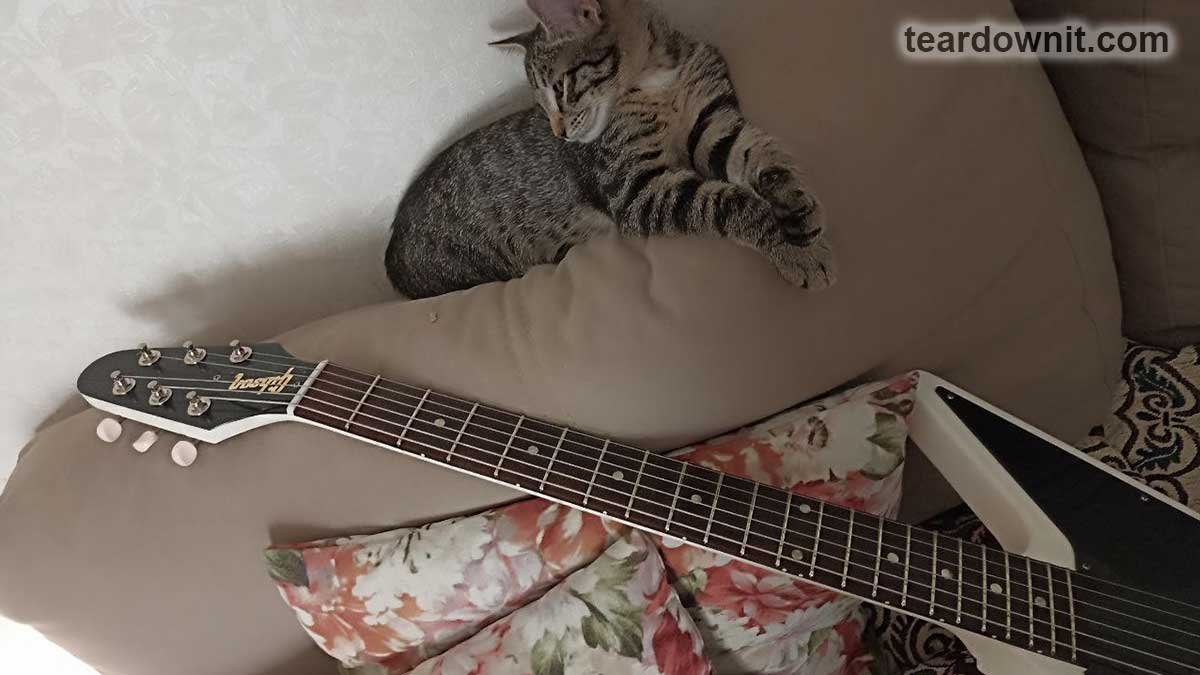
Does wood affect the guitar tone?
It is common knowledge that the design of an electric guitar affects its sustain. The semi-hollow body transfers part of the strings' vibration energy to the air; the sustain is shortened, but the sound production nuances are emphasized, which is important for the blues.
Additionally, harmonics that make multi-layered chords with complex alterations sound ugly are also suppressed; this matters for various jazz styles.
A solid-body guitar retains the strings' vibrational energy, resulting in longer sustain. Even longer for a guitar with a glued set-in and, moreover, a set-through neck. But both the glued neck and, especially, the through neck soften the attack a little.

That is why many bluesmen prefer a Stratocaster over a Les Paul. Rhythm guitarists tend to like bolt-on neck guitars, while lead guitarists pick set-in and set-through necks. Of course, this rule of thumb depends on the person; each musician does their own thing. It could be playing DJENT on a Telecaster with a single pickup, like Rick Beato.

We are accustomed to the fact that a string is a stretched wire. But in a striking clock, the string is a metal rod, fixed on one side and not tensioned. The bass string in the clock is called "gong"; it can be very long and twisted like a spiral to fit into the case

The guitar's soundboard and neck combined are also very massive strings compared to the actual strings. And it's made of wood for the most part, so it is much less hard and dense than regular metal strings.
So, the Q-factor of the soundboard and neck oscillating system is much lower than that of strings. Meaning that the natural frequency vibrations of the guitar's neck and body decay much faster than the vibrations of the strings.
Therefore, wood has minimal effect on the actual sound timbre of an electric guitar. The signal passes through pickups, cables, pedals, an amplifier, a cabinet, and then a microphone with an equalizer; it's safe to say that wood does not affect the frequencies.
The sustain time of the body and neck's vibrations is much shorter than any noted time, but it is comparable to the attack time when one hits the string with a pick.
Very dense, hard, and heavy types of wood, such as rosewood, pao ferro, and ebony (listed in order of increasing density), respond to attack with a short, sharp snap. Thus, the wood of the fretboard emphasizes the attack.
Indian laurel wood, used for the fingerboard of the Squier Bullet Mustang, resembles rosewood in appearance but is softer. It can be compared to the roasted maple wood of the Gibson MM Explorer`s fretboard.
Mahogany's soft, relatively light, and moderately porous wood creates a longer, more profound, and softened response that hides shortcomings in sound production. The Gibson MM Explorer has a mahogany neck.
But if the guitar's neck and body are made of mahogany, the sound may be too dull, washed out, and mumbly. To add some brightness, maple wood is used. The Gibson Les Paul Standard has a top made of it, the LP Tribute has a neck, and the 2011 MM Explorer has a lightweight Canadian maple for its entire body.
The desired sound attack is achieved through such combinations of materials. It's not a tone but just the attack. But the attack carries the absolute maximum of musical information and allows one to distinguish one musical instrument from another.
The body of the Gibson MM Explorer is thin but long and made of Canadian maple. The Squier Bullet Mustang's body is also thin but made of basswood (other variants may have poplar).
Poplar, especially basswood, responds to attack more dully than Stratocaster's alder or Telecaster's ash but still louder, shorter, and less deep than mahogany. As a result, the raw sound of the Squier Mustang is less dramatic than that of the MM Explorer and does not hide the flaws in sound production nearly as well.
So, the wood used in making an electric guitar, as well as the material, gauge, and tension of the strings, frets, nut, bridge, and pick, not to mention the pickups, do matter and influence the audio signal produced. This sound character can make it more complicated or simplify getting the desired guitar tone using pedals, an amplifier, and a cabinet.
History of DOD pedals

DOD was founded in Salt Lake City, Utah, in 1973 and named after one of its two founders, David Oreste DiFrancesco. In the early 1990s, the company was purchased by Harman International Industries.
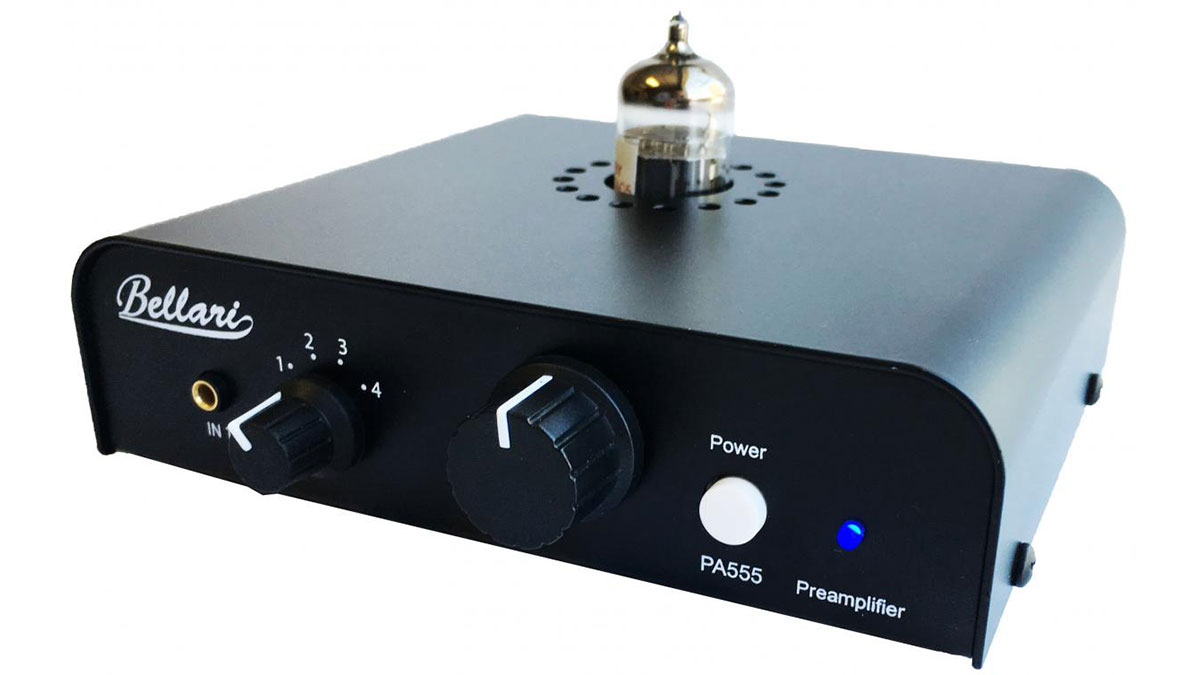
Today, David runs his own company, Rolls Corporation, and produces audio equipment under the Rolls and Bellari brands. And DOD/DigiTech is now a subsidiary of Cor-Tek Corp., Seoul, South Korea. Yes, they make Cort guitars and also make musical instruments for Harley-Benton, Squier, and many others.

And in this photo, the second founder of DOD, John Johnson, holds the most iconic and one of the first pedals of the company — the Overdrive Preamp 250.
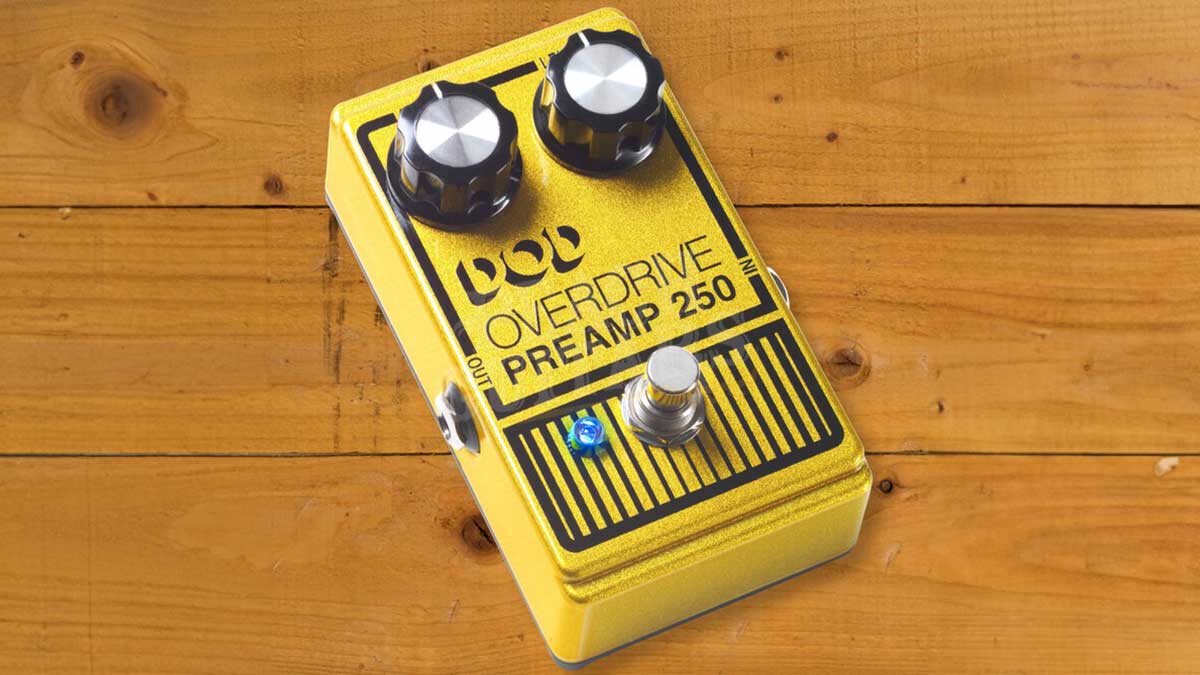
Very reminiscent of MXR Distortion+, right?

Could it get any simpler? The signal is amplified by one op-amp, followed by a symmetrical hard clipping stage using a pair of germanium diodes.
 R1 and R2 split the supply voltage in half, forming a virtual ground. Tantalum capacitor C1 grounds it for alternating current.
R1 and R2 split the supply voltage in half, forming a virtual ground. Tantalum capacitor C1 grounds it for alternating current.
Through R3, the non-inverting input of the op-amp receives a reference to the virtual ground at a constant voltage and receives the alternating voltage of the input signal through C3 and R4.
C2 acts as a treble bleed on the input, and C6 does the same on the output to prevent fizziness and whine. There is no tone control, only a VR2 output volume control.
And, of course, the VR1 gains control. It is located, and I must draw your attention to it, not in place of R6, the upper branch of the negative feedback divider, where it is found in the circuits of most overdrive and distortion pedals.
The MXR Distortion+ gain pot is located in the lower branch of the op-amp gain section feedback divider. This side is frequency-dependent since it contains capacitor C4 in series with resistors VR1 and R5.
This is the very place where the magnificent Voicing control is located on the rare "Dumble sounding" Hermida Zendrive and the iconic Precision Drive by Horizon Devices!
Here, the gain potentiometer also regulates the tone, or more precisely, the frequency structure of the overdrive. And therefore, it provides the guitarist with unique opportunities to tweak the tone.
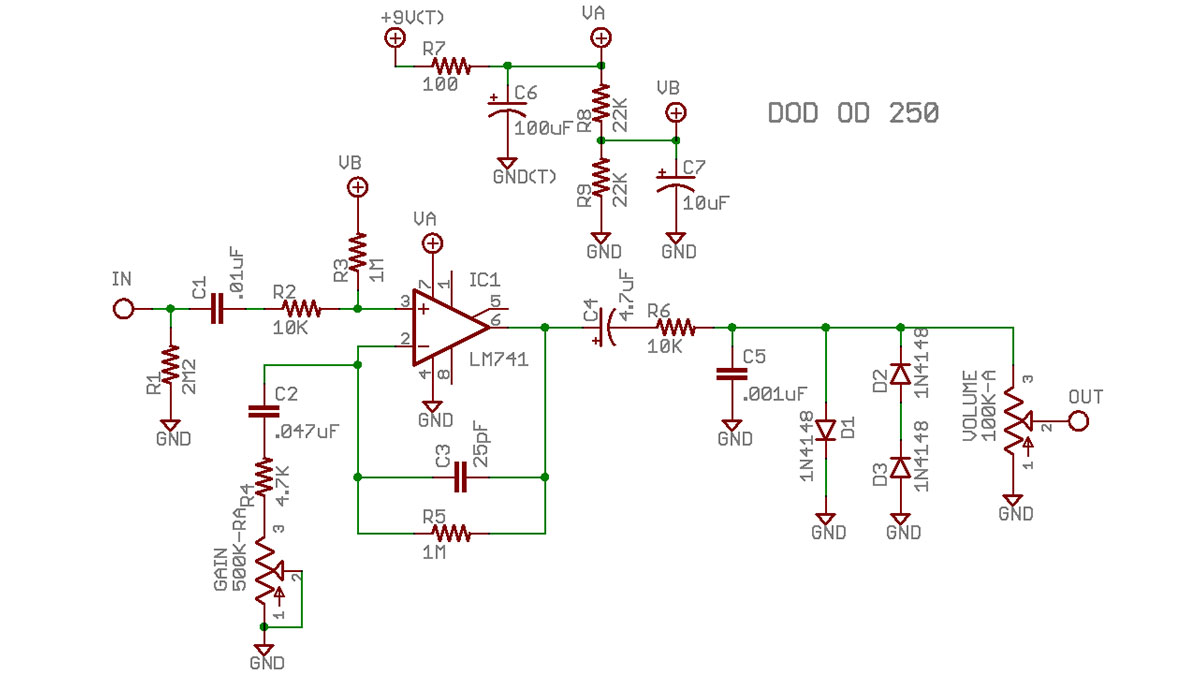
Here, we have an improved pedal from DOD. They've abandoned the input treble bleed because it is in the tone block of almost any electric guitar. This is the guitar's tone knob, a potentiometer in series with a capacitor that shunts the pickup to the ground.
DOD used silicon diodes instead of germanium, and more importantly, they implemented asymmetrical clipping, using three diodes instead of two. As we've learned in the article about a homemade tube amplifier, asymmetrical clipping is more pleasant to the ear than symmetrical clipping because it adds those sweet, even harmonics to the signal, as opposed to unpleasant, odd ones.
Another addition is the capacitor C3, which has a minimal capacitance of 25 picofarads. It is needed to prevent self-excitation of the operational amplifier and eliminate possible unpleasant high-frequency components.
And finally, Classic Tube Overdrive FX-53

DOD wasted no time, and in the second half of the 1980s, it developed, among others, this pedal with a "classic tube" sound.

At the bottom of the circuit, we see a buffered bypass with a flip-flop footswitch section that controls two JFET transistors, Q1 and Q2. Op-amp buffers U1A and U2A are added accordingly.
At the top left, we see a 100-ohm resistor between the battery positive and the circuit power positive terminals. As we remember from the post about the BOSS DS-1, this resistor not only protects the circuit, battery, and power supply from reversing polarity but also emulates the voltage sag of vintage molten-salt batteries, improving the sound of guitar overloads and preamps on transistors and operational amplifiers. So, an alkaline battery will sound like a salt battery but will last longer because it has a higher capacity.
The overdrive section now has symmetrical soft clipping on two silicon diodes in the negative feedback circuit.
Hard clipping DOD was not abandoned; that’s why the pedal is called Classic Tube Overdrive-Distortion. Moreover, the asymmetrical hard clipping of the Overdrive Preamp 250 was replaced with a symmetrical one.
This was all for nothing; the tech-savvy crowd modified the pedal by removing hard-clipping diodes, and they got a nice overdrive. This DOD FX-53's hard symmetrical clipping distortion ain't pretty and can't be turned off without modifying the pedal.
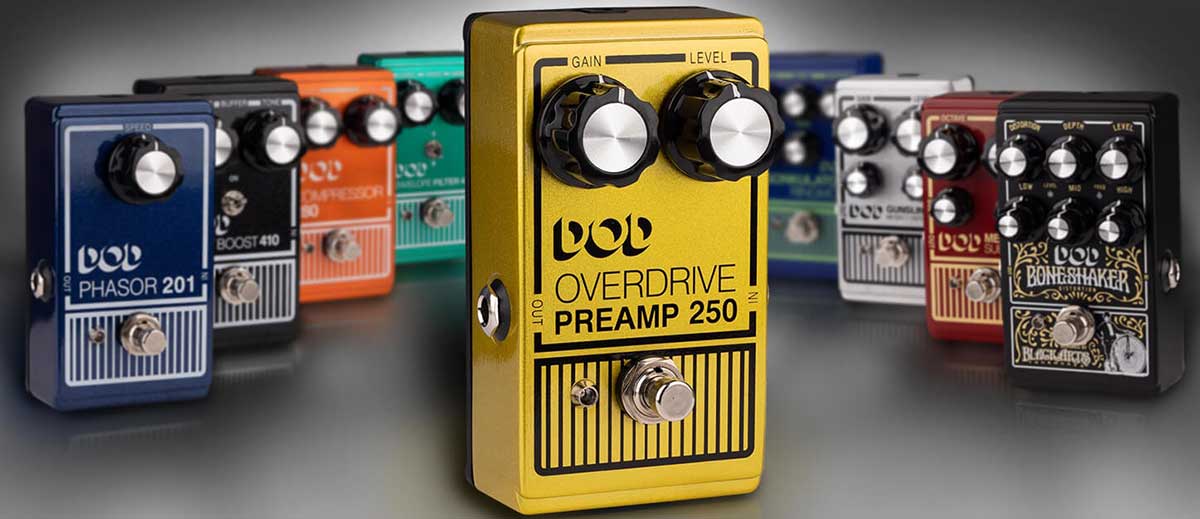
It is the reason why the Classic Tube FX-53 is a forgotten pedal. It was not reissued, unlike the iconic 201 Phasor, 280 Compressor, 440 Envelope Filter, 410 Bifet Boost, and, of course, 250 Overdrive Preamp and some others.
They've not even preserved the asymmetrical clipping from DOD 250 but simply removed two diodes from the circuit, leaving only soft clipping. This is exactly what Landtone did when developing the OD-2 DIY kit.

This is nothing more than a DOD FX-53 with true bypass and no hard-clipping diodes. It turned out to be an overdrive, and what an impressive one! This is by far the best overdrive pedal I own.

At the very end, we've come to another feature of the “classic tube” overdrive circuit. There is not one, but two magic branches with a potentiometer and a capacitor between the inverting input of the op-amp and the ground!
These are the gain control and the tone control. On the tone control, the potentiometer does not just treble bleed but also regulates the balance between two RC circuits with different cutoff frequencies.
One piece of magic added to a second extended magic loop creates such a beautiful guitar tone control panel where every combination of knob positions sounds excellent! This is one of the best guitar overdrive designs that was ruined almost 40 years ago by two unnecessary diodes.
Eagle-eyed viewers noticed that the DIY kit has a golden case in the photo, and the pedal in the video is assembled in a navy blue case from a DOD 280 Compressor clone. The fact is that I specifically ordered a kit with no holes for a future project and assembled the overdrive in a case from a compressor, which went into another project. Landtone produces many different DIY kits, PCBs, and enclosures for guitar electronics enthusiasts, and their products are available worldwide.
Some people may condemn hustlers from China for cloning classical circuits. Still, the history of guitar electronics is full of precedents of developers copying components and entire circuits from each other from the very beginning of this fantastic and fascinating art of guitar sound processing.
Sadly, sometimes, they abandon a fantastic project because they've made a small mistake and cannot see its bright potential. But then another enthusiast took the old scheme to a whole new level.
 teardownit
teardownit
Discussions
Become a Hackaday.io Member
Create an account to leave a comment. Already have an account? Log In.